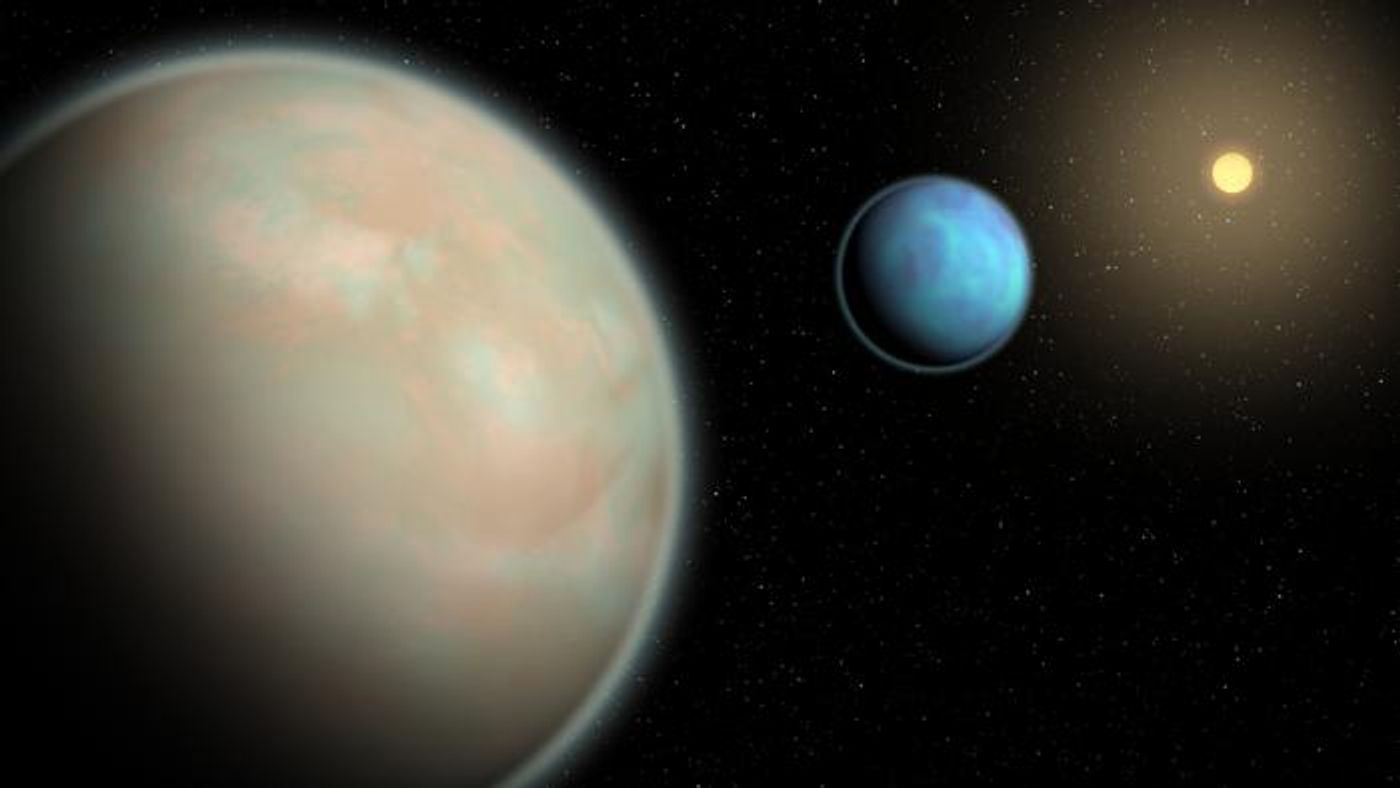What is the weather like on water-rich exoplanets? This is something a recent study published in Nature Astronomy hopes to shed light on as a team of researchers conducted laboratory experiments to simulate how hazy skies might form on such exoplanets throughout the cosmos. Haze changes the way light reacts to various gases within a planet’s atmosphere, which alters what astronomers detect, as well. This study comes as the number of potential water-rich exoplanets continues to grow and holds the potential to help scientists better understand the conditions necessary for the formation and evolution of water-rich exoplanets, including how life might form and evolve on them, whether on their surfaces or in their atmospheres.
Artist illustration of water-rich exoplanets comprised of hazy atmospheres, which was the focus of this study. (Credit: Roberto Molar Candanosa/Johns Hopkins University)
“The big picture is whether there is life outside the solar system, but trying to answer that kind of question requires really detailed modeling of all different types, specifically in planets with lots of water,” said Dr. Sarah Hörst, who is an associate professor of Earth and planetary sciences at Johns Hopkins University and a co-author on the study. “This has been a huge challenge because we just don’t have the lab work to do that, so we are trying to use these new lab techniques to get more out of the data that we’re taking in with all these big fancy telescopes.”
Using a custom-built gas chamber in Dr. Hörst laboratory at Johns Hopkins, the team analyzed gas combinations involving water vapor and additional elements and compounds that scientists currently hypothesize could be present in exoplanets throughout the cosmos. Additionally, they blasted the mixtures with ultraviolet light to demonstrate how a star’s energy could influence the mixtures and create haze particles within an exoplanet’s atmosphere.
In the end, the team found the data they gathered from the experiments were consistent with a well-known exoplanet, GJ 1214 b, and even offers better data about this exoplanet’s makeup more efficiently than previous studies. Going forward, the team envisions producing additional haze “analogs” that could be compared with previous studies on other exoplanets with the hope that the laboratory results could offer even better results than telescope surveys of these exoplanets.
Located just under 50 light-years from Earth GJ 1214 b is classified as a Neptune-like gas giant exoplanet whose mass is just over eight times that of Earth with a radius just under one-quarter of Jupiter. While it orbits on the interior of its star’s habitable zone, a May 2023 study published in Nature used NASA’s James Webb Space Telescope to identify water vapor within its atmosphere, despite the exoplanet being too hot to support life.
What new discoveries will researchers make about exoplanet haze “analogs” and how will these help scientists better understand water-rich exoplanets in the coming years and decades? Only time will tell, and this is why we science!
As always, keep doing science & keep looking up!
Sources: Nature Astronomy, Wikipedia, EurekAlert!, NASA, Nature






